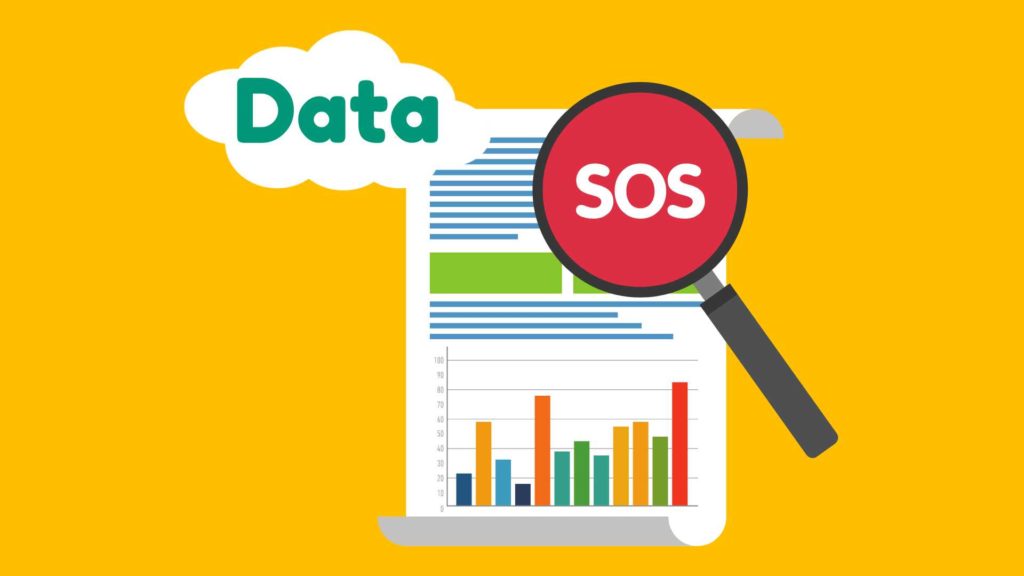
Data SOS: What is the new NIH Data Management and Sharing Policy?
Welcome to Data SOS, a regular column from Lane Medical Library where we answer questions about data management and data sharing submitted by the Stanford Medicine community. If you have a question that you’d like to see addressed in a future column, please leave a comment or use this form.
For our inaugural column, we thought we would answer the question we’ve been asked the most over the last few months – What is the new NIH Data Management and Sharing Policy?
The Short Version
Applicable NIH proposals received after January 25th, 2023 will now require the inclusion of a Data Management and Sharing Plan (DMSP), a short document that outlines how the data generated by the proposed project will be managed and shared. Once the proposal is funded, the contents of the plan will become part of the terms and conditions of the award.
The full policy can be found here and Lane Library maintains a guide page that details the new requirements and how to meet them.
Is data sharing required under the new policy?
Yes, but not always.
The new policy is not a blanket open data-sharing policy, meaning that it does not require every researcher to always share all of their data with everyone to be reused for any purpose.
That being said, the policy does establish an expectation for maximizing the appropriate sharing of research data generated by NIH-funded research. Any limits or exceptions should be outlined in the data management and sharing plan.
What needs to be included in a data management and sharing plan?
Six elements need to be addressed in the data management and sharing plan:
- Data Types: A description of the types and estimated amount of scientific data that will result from NIH-funded or conducted research, which scientific data will be preserved and shared, and the rationale for these decisions.
- Related Tools, Software and/or Code: An indication of whether specialized tools are needed to access or manipulate shared data to support replication or reuse, and name(s) of the needed tool(s) and software.
- Data Standards: An indication of what standards, if any, will be applied to the scientific data and associated metadata to be collected. This includes data formats, data identifiers, definitions, unique identifiers, and other data-related documentation.
- Data Preservation, Access, and Associated Timelines: A description of how data is preserved and (when possible) made available to others.
- Data Sharing Agreements, Licenses, and Other Use Limitations: NIH encourages the broadest use of scientific data resulting from NIH-funded or conducted research. If there are reasons why sharing must be restricted (e.g. privacy, security, informed consent, proprietary issues), they should be outlined in this section.
- Oversight of Data Management: An indication of the individual(s) who will be responsible for executing various components (e.g., data collection, data analysis, data submission) of the plan over the course of the research project and the roles of the individual(s) in data management, and a description of the appropriate expertise for oversight.
The NIH has provided a template for addressing all these issues. Though following the format of the template is not required, we do recommend addressing each issue in a separate section.
What help is available?
Lane Medical Library and Stanford Libraries collaboratively run the Stanford DMP service, which provides free assistance for Stanford researchers in writing (and implementing) their data management and sharing plans.
Lane Library maintains a guide Responding to the NIH Data Management and Sharing Policy that contains information about the policy and tools for complying with its requirements. Additional information can be found on resource pages maintained by the Resource Management Group (RMG), the Office of Research Data Governance and Privacy, and from sharing.nih.gov.
Hello, Author! I just finished reading your article on the Stanford Lane Medical Library blog, and I wanted to reach out and leave a comment. Firstly, I want to express my appreciation for providing an informative overview of the new NIH Data Management and Sharing Policy. It’s clear that this policy has significant implications for researchers and the scientific community as a whole, and your article effectively breaks down its key components.
Your article skillfully explained the rationale behind the policy and its goals, particularly in promoting data sharing, transparency, and reproducibility in research. I found your discussion on the various elements of the policy, such as data management plans, data sharing expectations, and the importance of data preservation, highly valuable. You provided clarity on the policy requirements and the steps researchers need to take to comply with it.
Additionally, I appreciated how you addressed some of the potential challenges and concerns that researchers may encounter while implementing the policy. Your suggestions for overcoming those challenges and leveraging the resources and support available were helpful and demonstrated a practical approach.
In conclusion, thank you, Author, for shedding light on the new NIH Data Management and Sharing Policy. Your article was well-researched, well-written, and provided a comprehensive understanding of the policy and its implications. I believe that fostering data sharing and proper management practices is crucial for advancing scientific research and promoting collaboration. Keep up the great work in keeping the scientific community informed about important policies and developments, and I look forward to reading more insightful articles from the Stanford Lane Medical Library blog!